A peek into a friend’s kitchen can tell you a lot about their habits. Just looking into my own pantry, anyone can see I frequently use dried herbs and Cretan sea salt, and that I always have a rotating three-liter can of Greek olive oil. Pantries tell us more than just preferential tastes. They reveal personality traits, flavors of nostalgia or obsession, cultural heritage, and guilty pleasures.
With this in mind, Life & Thyme is taking a peek into the pantries and refrigerators of chefs from around the world who have made California their home. We live in a time when you can access food from so many cultures, and we find chefs creating innovative fusions, mixing and matching food from their American selves and their cultural heritage. The migrant pantry is a reflection of modern American immigration.
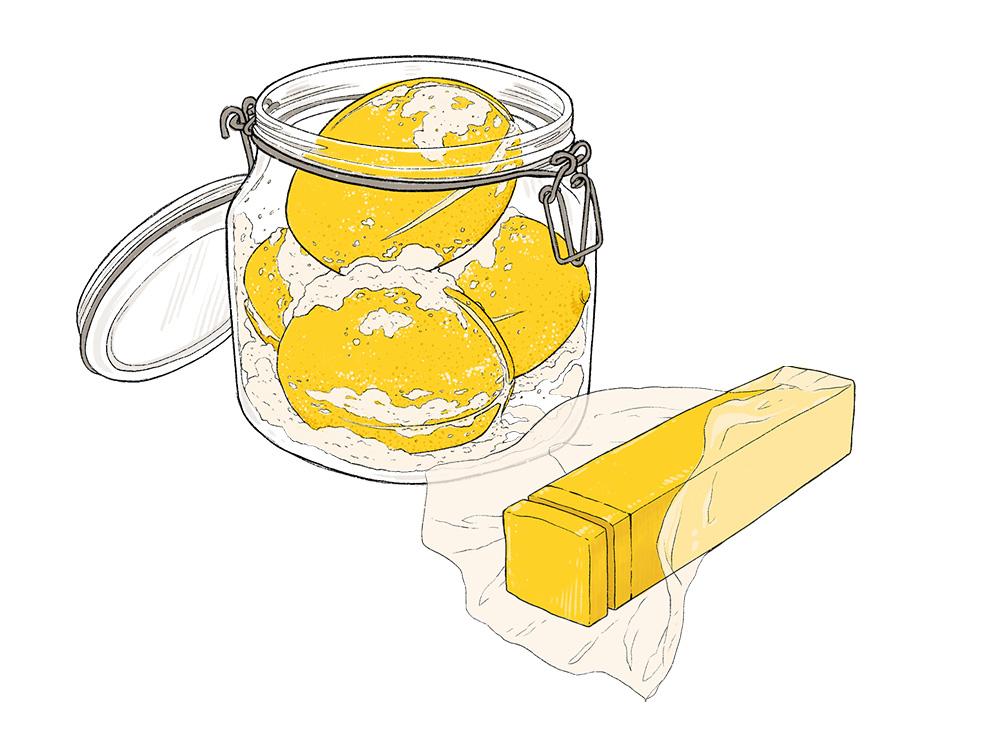
Jessica Wang
Taiwanese, Chinese, Thai
Los Angeles, California
Jessica Wang is a pastry chef and pickle extraordinaire. After spending time at the likes of State Bird Provisions, Lasa and Madcapra, she now splits her time between Los Angeles’ famed specialty shop Cookbook while running her artfully plated butter mochi pastry pop-up Pique-Nique, as well as pickle workshop, Picklé Pickle Co. As the daughter of two Chinese immigrants, and after spending time in Thailand as a teenager, Wang’s diverse palate is clearly reflected in her pantry choices.
Most Used Pantry/Fridge Items:
Alongside sesame oil, dried shrimp and fish sauce, I’m a big fan of salt-cured citrus. Lately it’s been calamansi, but I oscillate between meyer and eureka lemons and key limes. They taste like sunshine! They brighten up sauces and marinades, and even add a pretty punch to fruit salads. I also frequently use doufu ru, which is tofu fermented in brine. It’s something I remember eating at my grandparents’ home as a kid for breakfast, where rice porridge was always served with the best spread of sides. It is special to have this texture in Chinese food, and the umami is familiar like the taste of soy sauce and miso, but uniquely its own with a generous lingering on the tongue.
Most Surprising Item in Your Pantry:
Lawry’s seasoning salt. I remember my mom always having a huge container of it around when I was a kid. I rarely use it, but I like keeping it around for nostalgia’s sake.
“American” Staples You Can’t Live Without:
Butter! My earliest childhood memory of butter is of a chunk melting in a pot for Kraft Mac n’ Cheese. When I moved to Thailand with my family as a preteen in the late nineties, there was no American butter. Instead there was a lot of Thai-produced margarine and butter imported from Australia. I became interested in baking during high school for bake sales and learned how to make my favorite American baked goods through library books, the new website of the time Allrecipes.com, as well as through American classmates. The Australian butter helped me feel connected to my culture as an American girl living in Asia.
Favorite Kitchen Appliances or Tools:
My steel wok, long wooden chopsticks, granite Thai mortar and pestle, Japanese ceramic ginger grater, and Kiwi stainless cleaver.
Cultural Item More Home Cooks Should Know About:
Chinese dried and fermented black beans.
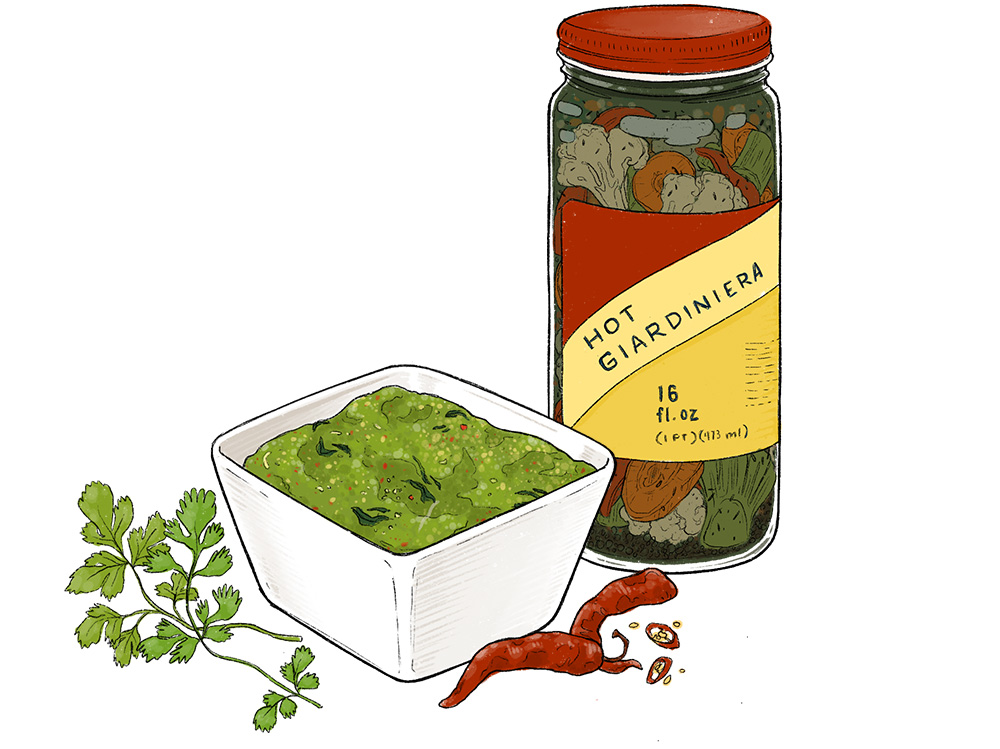
Micah Wexler
Jewish
Los Angeles, California
Wexler might spend most of his time managing the family deli empire’s four Southern California locations, but outside of this traditional deli canon, Wexler’s home tastes reveal the panorama of his Chicago Jewish-American upbringing.
Most Used Pantry/Fridge Items:
My parents are from Chicago where Giardiniera is the staple condiment. It’s a spicy blend of pickled vegetables with a special chili called “sport pepper” only found in Chicago. It gives that great pop to anything from eggs to pasta to roasted meat and fish.
I’m also a strong proponent of always having a jar of good Italian anchovies for toast, or to constantly (and secretly) add into sauces, dressings and marinades. They give an incredible punch of umami without detecting any fishiness.
How Motherland Nostalgia Plays a Part in Your Kitchen:
I don’t consider “motherland” to be a simply defined term. I’m a third generation American, so ketchup and mustard are status quo for me; but I’m also Jewish, which for me means a whole world of pantry items from Middle Eastern spices, Persian black lime, tahina, and probably a box of matzah meal stashed in the back. On top of all of that is my Chicago heritage.
Imported Pantry Item That’s Better Abroad:
When I have tahina in Israel it’s light and almost snow-white in color. It has no bitterness and always has a fresh, nutty aroma. I’ve never been able to find one that compares to it in the U.S.
Cultural Item More Home Cooks Should Know About:
Zhug, which is Middle Eastern (Yemeni). It’s become the hot sauce of the moment in L.A., yet often when I have it at a non-Middle Eastern restaurant it totally misses the mark.
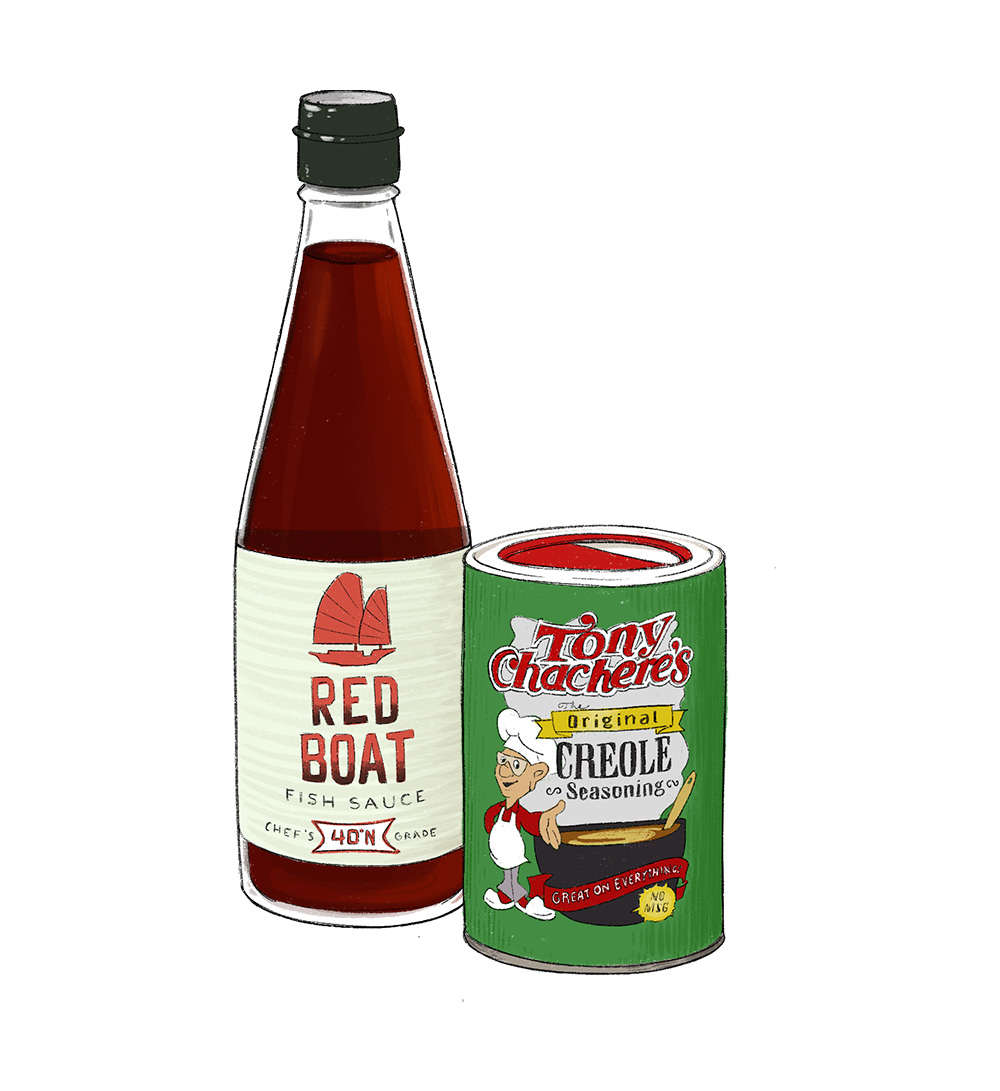
Bryant Ng
Vietnamese, Chinese
Los Angeles, California
Bryant Ng is well-known for his first restaurant, The Spice Table, which earned awards from Food & Wine’s “Best New Chef 2012” to L.A. Mag’s “Chef of the Year” in 2013. Ng, along with his wife Kim (who works as an immigration attorney), and their partners now run Cassia in Santa Monica, which celebrates Ng’s vibrant, ancestral flavors of Southeast Asia, combined with local, seasonal produce.
Favorite Pantry/Fridge Items:
Red Boat Fish Sauce, which is the bloodstream of Vietnamese cooking and is used to make food more savory in lieu of salt, as well as bring out umami flavor. Pearl River Light Soy Sauce, which is the bloodstream of Chinese cooking, and is used in Chinese cooking the same way fish sauce is used. Lee Kum Kee Oyster Sauce is another favorite. It’s important sauce in both Chinese and Vietnamese cuisine. It adds savory and sweet flavors and color, as well as binds ingredients together, especially in a stir fry. We also use quite a bit of Chinkiang vinegar for our dumplings, mixed with soy and chili sauce or oil; it’s also used in hot and sour dishes like hot and sour soup, and hot and sour stir fry.
How Motherland Nostalgia Plays a Part in Your Kitchen:
The sauces and seasonings we cook with on a regular basis are used not only because they taste great, but also to preserve our culinary heritage, as well as to create new dishes here in California based on those long-standing traditions.
“American” Staples You Can’t Live Without:
I am married to Tony Chachere’s Original Creole Seasoning. I use it in so much of my cooking.
It is a savory salt seasoning that adds a nice kick to my soups, stews, gravies and vegetables.
Imported Pantry Item That’s Better Abroad:
Rice paper is an essential element of Vietnamese cuisine, serving as the culinary vehicle for meats, herbs and vegetables—even sometimes as the main ingredient, like in a rice paper salad. The best rice paper can only be found in Vietnam where it is sold fresh and paper-thin. It’s one of the things I miss most about eating in Vietnam.

Daniele Uditi
Italian
Los Angeles, California
Daniele Uditi is head pizzaiolo and chef of Pizzana in L.A. Originally from Naples, Italy, Uditi was raised in a culinary family; his mother was a chef, his aunt a bread-maker, and his grandfather a pastry chef. Uditi fuses Neapolitan classics and techniques with local, seasonal inspiration.
How Motherland Nostalgia Plays a Part in Your Kitchen:
They say you can take a Neapolitan out of Naples, but not the Naples out of a Neapolitan. In my pantry you’ll find eighty percent Italian products and twenty percent Mexican products, because my wife is Mexican.
“American” Staples You Can’t Live Without:
After living in the U.S. for almost ten years, I’ve come to understand that America is such a mix of cultures that I don’t think there is a definition anymore of a true American. The beauty is our country is populated by so many immigrants that all the cultures melt together to create something amazing. If I were to define one American item that I love it would probably be ketchup. I’m a french fries freak, so I can’t live without ketchup.
Imported Pantry Item That’s Better Abroad:
We live in a beautiful moment when everything can be found and everything is so connected, so there isn’t that much I can’t find these days, especially in California. The one thing I’d mention is Italian cured meat because not everything can be imported. I miss the salame Napoletano made by my auntie. I miss smelling the curing process when I walked into my house, and seeing all the salami hanging in the basement. I would always sneak one or two pieces.
Cultural Item More Home Cooks Should Know About:
People think they know about mozzarella di bufala, but I don’t think they do. Mozzarella is produced fresh every day and is something that should be consumed the day-of, while the texture is chewy and full of milk. We import mozzarella, but it’s not the same, so my worry is that people won’t appreciate the real taste when they eat it in Italy. I encourage people to go to Caserta in Italy and try a fresh mozzarella. Eat it with your hands and get the full Italian experience of this product that is a staple of our culture.
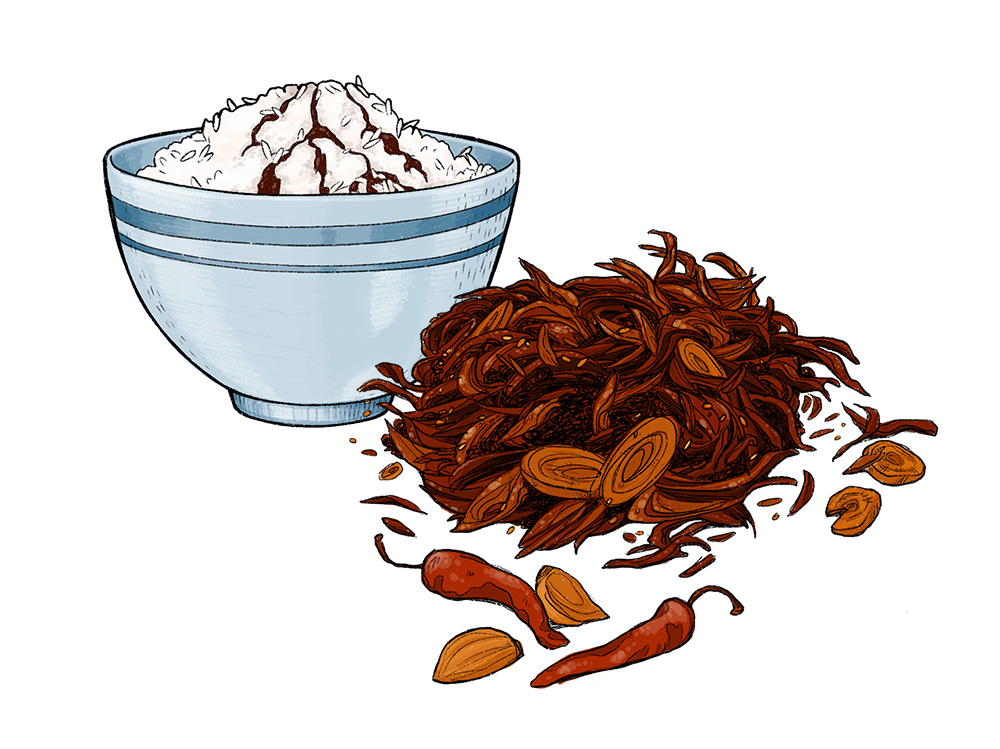
Jessie Nicely
Burmese/Mixed-Race Asian American
Los Angeles, California
Jessie Nicely is the co-founder of the popular food art zine Compound Butter and pioneer of the pop-up Burmese, Please. Growing up in Berkeley, Nicely was exposed to a range of ingredients and cultures, but her family pantry always leaned toward Asian staples. This carried through to how she eats and cooks today, including highlighting her Burmese heritage.
Favorite Pantry/Fridge Items:
Soy sauce has been a constant favorite for most of my life. I grew up eating a lot of Chinese food, so those recipes are still in heavy rotation in our house. Nothing adds umami as well as fish sauce, which is also used heavily in Burmese cooking, as is turmeric; I keep both in fresh and dried form for a variety of different recipes including curries, salads and stews. I’m also a huge fan of chickpea flour to thicken soups and stews while keeping them gluten free. It’s also the base of Burmese tofu.
Guilty Pleasures:
One of my greatest guilty pleasures is white rice with soy sauce. It’s so simple and comforting, but I really only eat it at home.
Cultural Item More Home Cooks Should Know About:
Ngapi Kyaw is a great pantry staple that was in our fridge my whole life. It’s a condiment made with fermented shrimp paste, dried shrimp, corn oil and chili flakes. It’s spicy, funky and delicious. I make my own home blend for personal use and for the pop-up, and I encourage people to try it whenever I can.
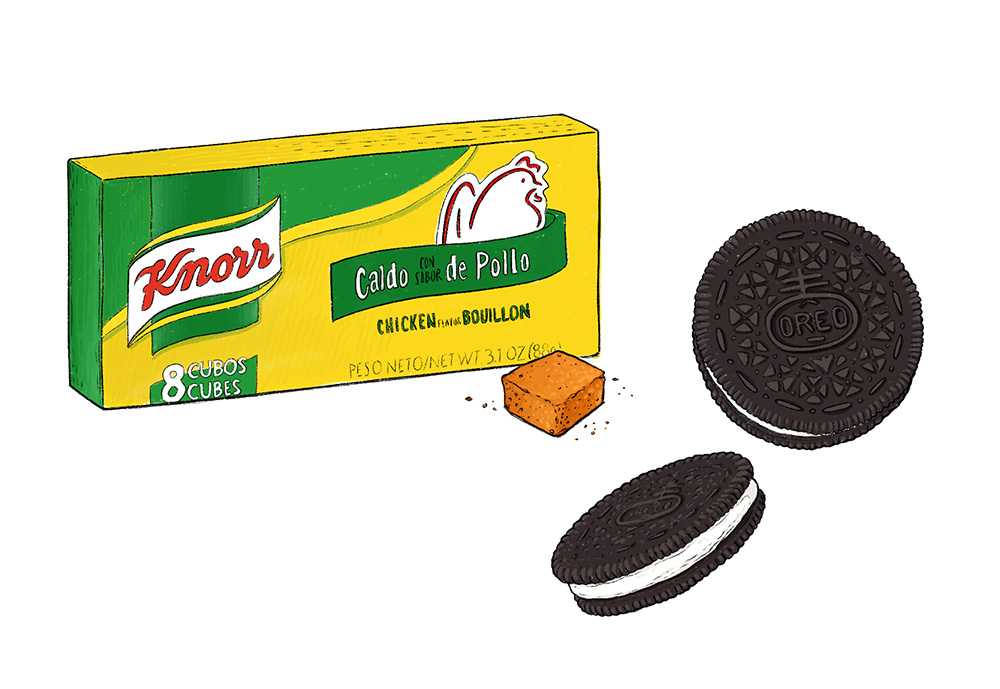
Claudette Zepeda-Wilkins
Mexican
San Diego, California
Born in the U.S. and raised between Tijuana and San Diego, Zepeda-Wilkins’ kitchen flavors hark back to family recipes and memories from both the U.S. and Mexico. This connection to her homeland goes beyond the pantry, and serves as a tool to pass on her cultural heritage to her children.
Favorite Pantry Items:
My pantry reflects a budget-conscious single mom and home cook. With Knorr suiza chicken bouillon, canned tomato sauce, corn tortillas, rice and beans, I can literally survive an apocalypse. I can make sopa de arroz, enfrijoladas, entomatadas, chilaquiles, sopa de frijol…
“American” Staples You Can’t Live Without:
Americana foods that I have always been fascinated by include Pillsbury biscuits, Stove Top, Kraft singles and Oreos. I can vividly remember my first meatloaf and tuna casserole at my friend’s house as a kid. I also love curry spice blends or ramen noodles—something I can doctor-up to make a quick, flavorful dinner.
Favorite Kitchen Appliances or Tools:
My Thai bamboo rice steamer basket and pot, bean smasher, my mother’s molcajete, and my comal.
Imported Pantry Item That’s Better Abroad:
Chiles, cacao, cinnamon, chamoy, machaca, corn, and most of all, dairy. Specifically, the cheeses made with unpasteurized milk. The chiles are fresher in Mexico, and to my taste, many spices in grocery stores in the U.S. tend to taste stale. It becomes a scavenger hunt finding good spice vendors, and while I still import most of what I use, I thankfully have a few vendors in the U.S. that I return to time and time again.





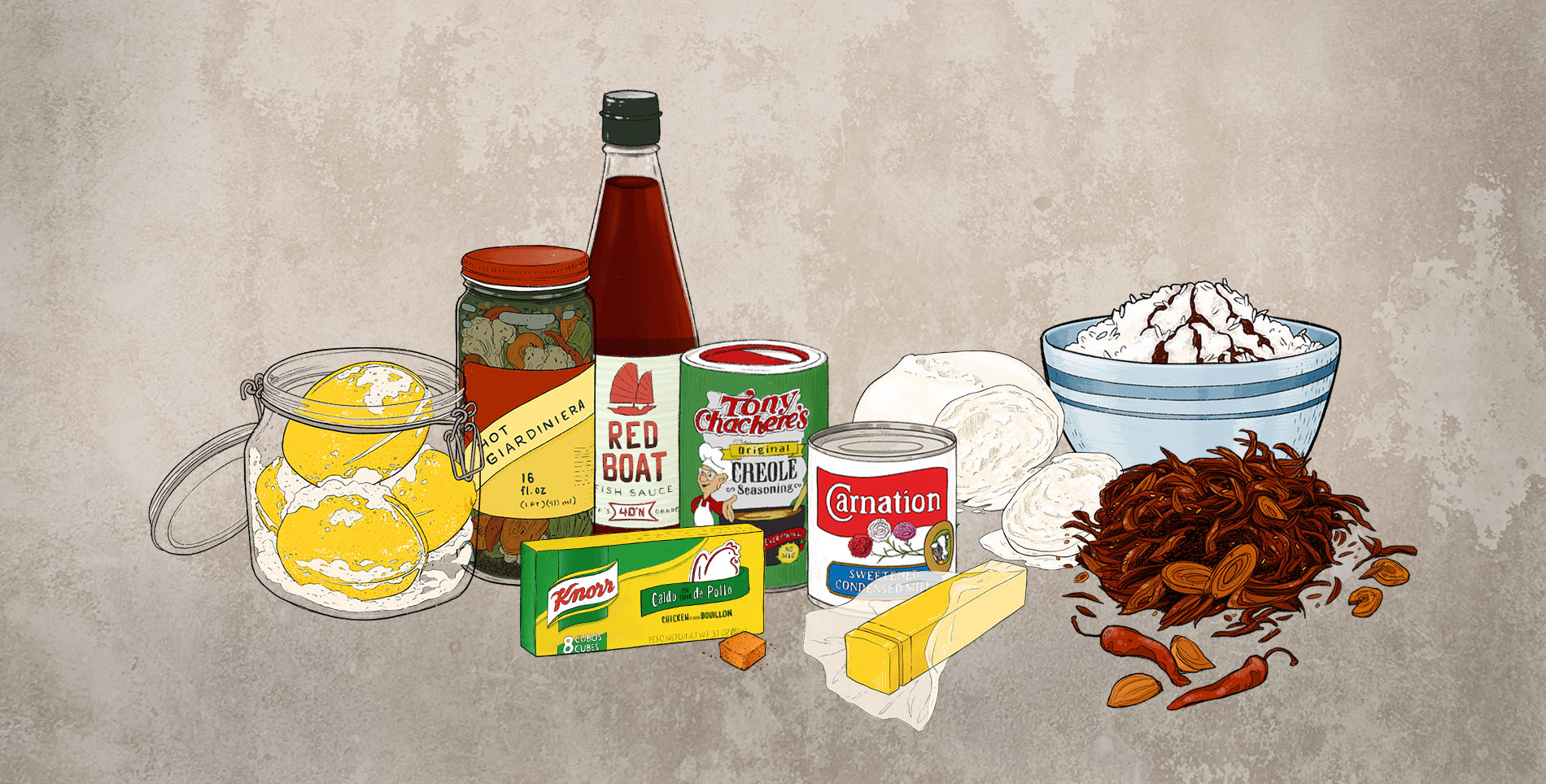

Our comments section is for members only.
Join today to gain exclusive access.